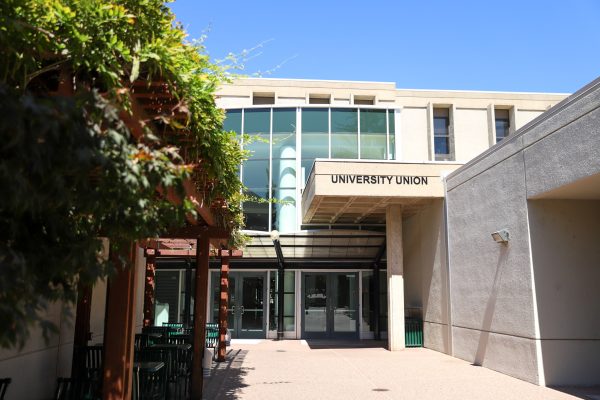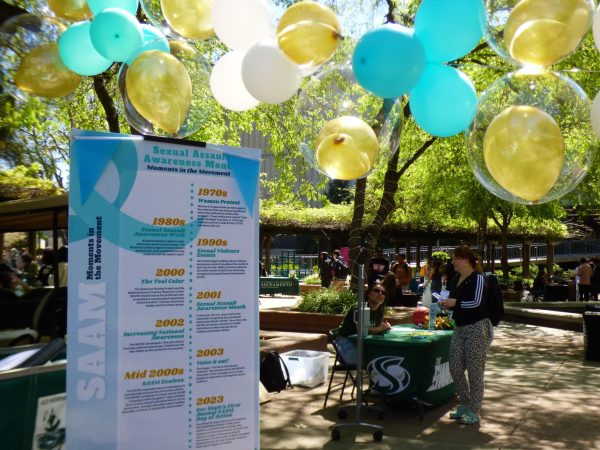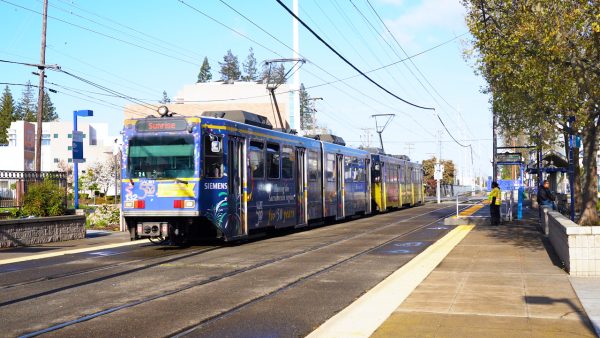University presents draft master plan on future construction projects
February 12, 2014
After the third campus forum presented by the Sacramento State’s Master Plan Task Force on Monday, the university is one step closer presenting the final draft of the future campus landscape.
The task force narrowed down several alternative options that incorporated suggestions made by the campus community including students, faculty and staff, to the option being called Grand Parks Scheme, which centers the campus around a bioswale designed to remove silt and pollution from surface runoff water.
Susan Painter, senior planner and director of research with A.C. Martin, said the task force proceeded with the Grand Parks Scheme because it was universally liked by the campus community and was based on suggestions and comments from previous forums.
A.C. Martin was hired last September as the architect firm hired to help rebuild parts of the campus.
Though not official until April, the plan will essentially remove the centered and older buildings like Douglass and Alpine halls to create an open space to build the bioswale, shift around bike trails, create room for an event center and more public housing.
“The Grand Parks Scheme is a holistic campus sustainability plan that uses the open space and creates a greenway that goes all the way through that links the north and south of the campus,” Painter said. “One of the purposes of that is to help manage the stormwater. Gradually it will be pumped to the river and it will even be cleaner.”
The bioswale requires a dig out in order to put in infrastructure and is a long process, which will take place over time as the funding becomes available from the state.
“Of course that’s the case for the whole master plan; there’s a series of moves that will be made,” Painter said. “It’s certainly a 10-year master plan.”
However, a quicker process is expected for certain aspects of the draft plan that does not require funding from the state, like campus housing, incorporating a view of the river, a reorganized north entrance and features a new administration and services building right at the head of the driveway.
Even with the large involvement of community members in narrowing down the master plan draft to the current Grand Parks Scheme, some concerns arose during the forum.
Denise Wessels, director of the Associated Students Inc. Children’s Center, said she has questions about relocating the center near Interstate 80 and the railroad tracks for health and safety reasons.
“Young children and their outdoor play environments are vulnerable to air and noise pollution,” Wessels said. “I believe that the Sac State student parents will also have concerns about locating the center next to a known hazard.”
Vice President for Administration Mike Lee said there would be compromise if the opportunity arose to relocate the Children’s Center to be able to give it more space or put the center in a new location where traffic and security would not be an issue.
“Part of our master plan is that we try to create a space that’s very welcoming and a good environment for students, faculty and staff,” Lee said. “So the Child Care Center is very important to us and it is a very successful program.”
Lee, who helps oversee the master plan project, said although this is the last public forum before the final master plan, the task force is still considering suggestions from the community before completion in April.
“If you look at the overall goal of the master plan, we’re hoping the layout will be supporting academic function and excellence, which is something that I believe the institution should be (doing),” Lee said. “It would create an environment that we believe would give an experience to students and faculty that would keep them on campus and help them through their education.”
As far as the effects of construction on the campus environment, Lee said over the course of the next 10 years, any interferences will be avoided or worked out.
The trees on campus, awarded for their excellence by the Arbor Day Foundation in 2013, will be in consideration as well an attempt to preserve or move them.
“With any kind of construction project there’s inconvenience,” Lee said. “But we have done many of this over the years, so it’s something that can be worked out and arranged.








































































































































